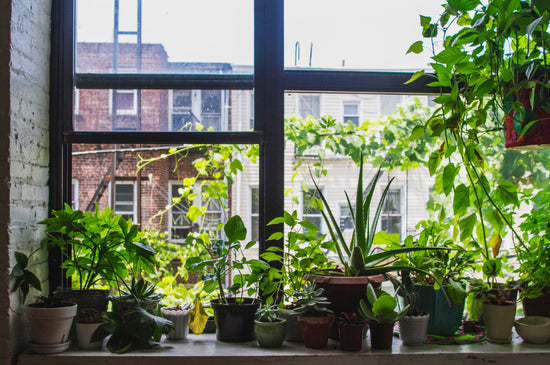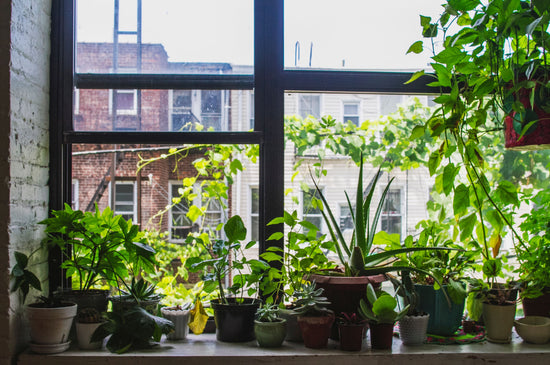Clematis 101: A Beginner’s Guide to Growing Beautiful Vines
Introduction: Why Clematis Deserves a Spot in Your Garden
Clematis vines are one of the most versatile and captivating plants you can add to your garden. Renowned for their vibrant blooms and climbing abilities, clematis can transform fences, trellises, and arbors into stunning focal points. Whether you’re new to gardening or an experienced green thumb, clematis vines offer endless opportunities to elevate your outdoor spaces. Explore Wekiva Foliage’s clematis collection to find the perfect variety for your garden.
What is Clematis?
Clematis is a genus of climbing vines known for their striking flowers that come in a variety of colors, shapes, and sizes. Often referred to as the "queen of climbers," clematis vines are prized for their ability to scale structures and create vertical interest in gardens. Some popular varieties include:
- Clematis Montana: A vigorous climber with masses of small, fragrant flowers.
- Clematis Jackmanii: A classic with deep purple blooms.
- Sweet Autumn Clematis: Known for its fragrant white flowers and late-season blooms.
Choosing the Right Clematis for Your Garden
When selecting a clematis vine, consider factors such as bloom time, flower color, and growth habit. Some varieties, like Clematis Armandii, are evergreen and ideal for year-round interest, while others, like Clematis Viticella, provide vibrant summer blooms. For collectors, rare varieties like Clematis Diamantina or Clematis Bourbon are worth exploring.
Planting Clematis: Step-by-Step Guide
- Choose the Right Location: Clematis thrives in well-drained soil with at least six hours of sunlight daily.
- Prepare the Soil: Mix organic compost into the soil to enrich it with nutrients.
- Planting Depth: Dig a hole twice as wide and deep as the pot. Position the root ball so the crown is about 2-3 inches below soil level.
- Provide Support: Install a trellis or stake to guide the clematis as it grows.
- Watering: Keep the soil consistently moist but not waterlogged.
Caring for Your Clematis Vine
- Pruning: Prune clematis based on its group. For instance, Group 1 clematis, such as Clematis Montana, should be pruned lightly after flowering, while Group 3 varieties, like Clematis Jackmanii, require a hard prune in late winter.
- Fertilizing: Feed your clematis with a balanced fertilizer in early spring to encourage growth and blooms.
- Mulching: Apply a layer of mulch around the base to retain soil moisture and regulate temperature.
- Pest Control: Watch out for aphids and slugs. Use natural deterrents or insecticidal soap if needed.
Design Ideas: How to Use Clematis in Your Garden
- On a Trellis: Create a striking focal point by training clematis vines to climb a freestanding trellis.
- Over an Arbor: Frame garden entrances with cascading blooms for a romantic touch.
- Companion Planting: Pair clematis with climbing roses or evergreen shrubs for a layered look.
- Ground Cover: Use low-growing varieties like Clematis Viticella to cover bare patches in your garden.
Top Varieties for Beginners and Collectors
- Clematis Montana Rubens: A fast-growing vine with pink blooms. Learn more here.
- Clematis Candy Stripe: Features striking bi-colored petals. Shop Candy Stripe.
- Clematis The President: Known for its large, royal blue flowers. Discover The President.
Conclusion: Add Clematis to Your Garden Today
With their vibrant blooms and versatile growth habits, clematis vines are a stunning addition to any garden. From beginner-friendly varieties to rare collector's items, there’s a clematis for every gardener. Start your clematis journey with Wekiva Foliage’s clematis collection and transform your outdoor space into a floral paradise.
FAQ: All About Clematis
1. How much sunlight does clematis need?
Clematis thrives in full sun to partial shade. Most varieties need at least six hours of sunlight daily.
2. When should I prune my clematis?
Pruning depends on the clematis group. Group 1 should be pruned after flowering, Group 2 in early spring, and Group 3 in late winter.
3. What is the best soil for clematis?
Well-drained, fertile soil enriched with compost is ideal for clematis vines.
4. How do I protect clematis from pests?
Check for common pests like aphids and slugs regularly. Use insecticidal soap or natural remedies as needed.
5. Can clematis grow in containers?
Yes, compact varieties like Clematis Multi Blue are perfect for container gardening. Ensure the pot has good drainage and ample space for root growth.





